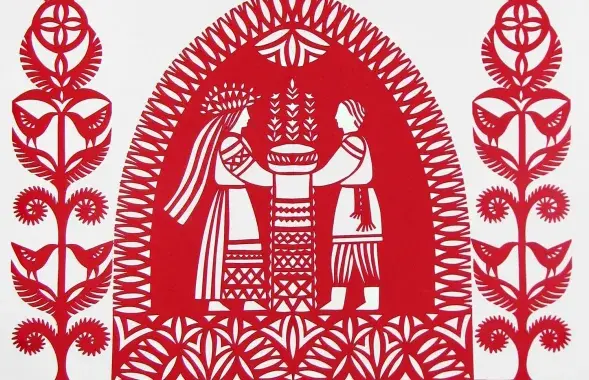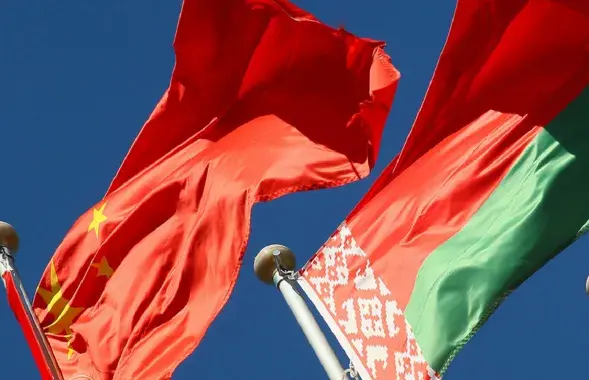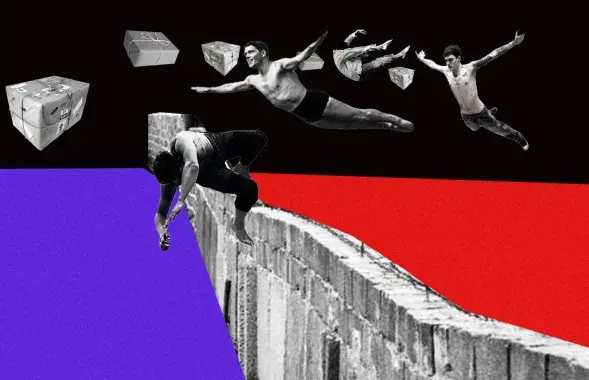Can Marc Chagall be considered a Belarusian?
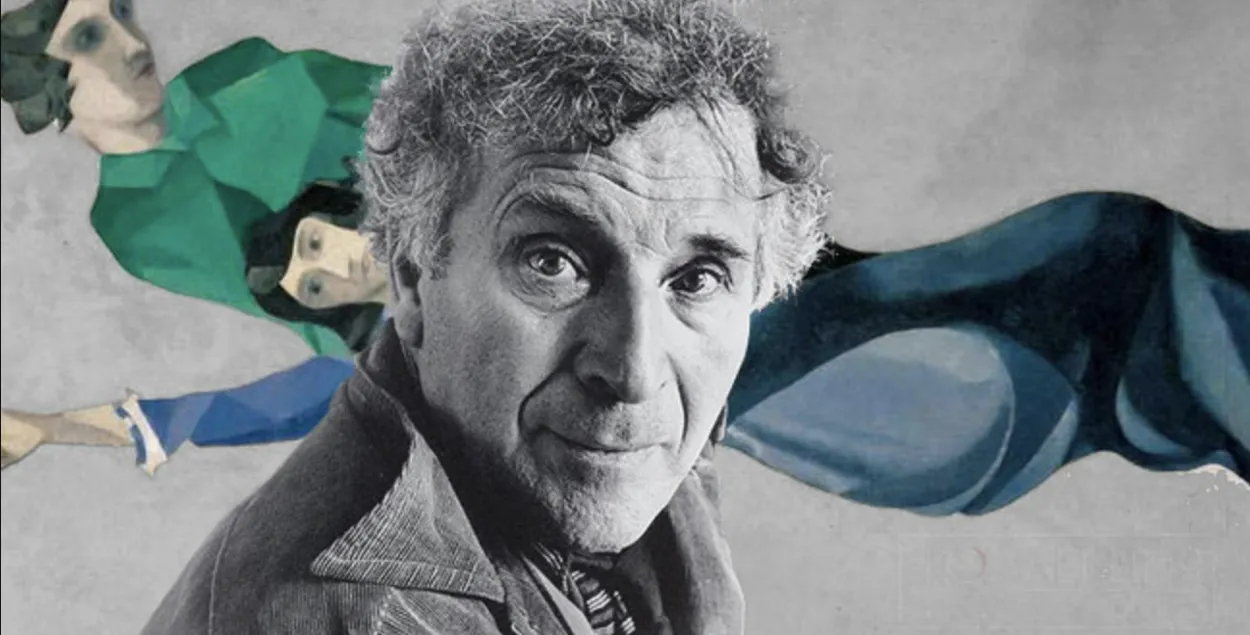
Collage with a photo of Marc Chagall / sammlung.ru
July 7 is the 137th anniversary of the birth of artist Marc Chagall. He was born in Liozna in the Vitsebsk region, then part of the Russian Empire, to a Jewish family. During his life, he changed a dozen cities. However, Vitsebsk motifs appeared in his works until the end of his life, although the artist never considered himself a Belarusian.
So, should we consider Chagall a Belarusian artist? Euroradio has examined the problematic question of Chagall's heritage.
Jewish, Russian, French, Belarusian
It should be noted from the outset that there is no academic or cultural consensus on Chagall's identity. The artist was of Jewish origin and spent his childhood in the city that was then part of the Russian Empire. He then moved and worked in various countries around the world, including France, Germany, the USA, and others.
Therefore, Chagall is presented in different ways in public sources of information. In Russian Wikipedia, he is called a Russian and French artist; in the French definition, he is more diplomatic—"a native of the Vitsebsk region of Belarus, naturalised as a French citizen in 1937." The English-language and two Belarusian-language versions of Wikipedia indicate that Chagall is a "Belarusian-French artist" and mention his Jewish roots.

As for museum funds and auction houses, references to Belarus are much less frequent. In the catalogue of Sotheby's, which last year sold the drawing "Above the City" for 15 million dollars, Chagall passes as a Russian-Jewish artist. The Metropolitan Museum of Art in New York writes that the artist was "born in 1887 in the provincial capital of Vitsebsk in western Russia to a Hasidic Jewish family.
However, not all art activists accept the situation with Chagall and other artists of the Vitsebsk Art School's origin as it is today. In March 2023, the Belarusian Rada of Culture launched the #art_born_Belarus campaign, which aims to correct the descriptions of works so that artists in the collections of the world's art museums are labelled as Belarusian-born.
So far, the campaign has had only one notable success: the National Gallery of Art in Washington, D.C., has added labels to paintings by artists of the Vitsebsk School, stating that although they were born in Russia, they are now on the territory of Belarus.
"Chagall is Belarusian for all Belarusians"
Disagreements about Chagall's attribution in encyclopedias and museums do not answer whether he should be considered a Belarusian artist. Therefore, we turn to art historian and populariser of fine arts Nikita Monich for an answer.
"If we talk about the role of Chagall in world culture, art, and history, he is a world artist and one of the most popular and sought-after. In the World Art Database of artists by works of art and their acquisition, he has been one of the first places in the World Art Database for the last twenty or more years, as long as this database has existed.
However, most of his artistic biography and success have been linked to two countries. It's primarily Germany and then, of course, France. First of all, Paris is where he studied, was recognized and became a world-famous artist. At the same time, he had a period where he lived in the USA and was also represented there. That said, his cultural identity, being ethnically Jewish, and his connection to Israel are important aspects of his life. But Chagall never identified himself as a Jewish artist.
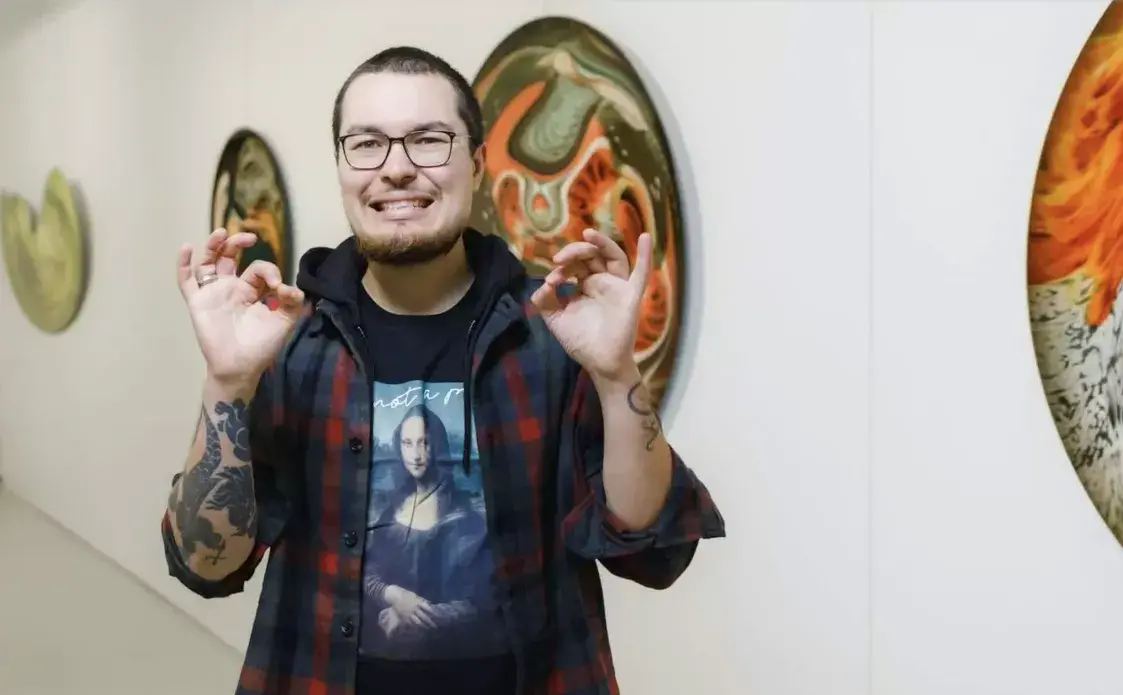
Given all this historical context, Monich says, let's go back to the roots.
"Several times in his biographies and interviews, Chagall referred to himself as a Russian artist or a Russian in general. That's his self-identification. And it is maintained by the curators of his exhibitions, by his descendants".
It seems that all this does not support calling Chagall a Belarusian artist. But Monich believes that it is useful for Belarusians to consider the artist their own.
Vitsebsk, the city that played a crucial role in Chagall's life, is a source of pride for Belarusians. It is where his identity was shaped, where he absorbed the views of the city and continued to paint them throughout his life. It is also where he was mentored by Yudel Pan, who consistently developed his school and nurtured talented young artists. This strong connection to Vitsebsk is a testament to Chagall's Belarusian identity.
Today, Chagall is part of our Belarusian identity. Those stereotypes we have about culture. That is, if we list people of culture, Chagall is the first artist on the list.
"It is clear that for nationally oriented Belarusians, Chagall is our everything. But for Belarusians who live on the other ideological side of the barricades, the artist is also our everything. Many of them write in comments under the video on my YouTube blog that modern artist-emigrants are traitors; they have abandoned their homeland. What about Chagall? He loved his country and addressed it in his art for a long time, even though he left it. This shows that Chagall is Belarusian for all Belarusians".
This means that he is part of our culture. There's only one thing left - to continue taking steps to make Chagall present in this culture: to buy his paintings, to develop tourism in the places where he lived and worked. According to Monich, all this is still not enough in Belarus.
